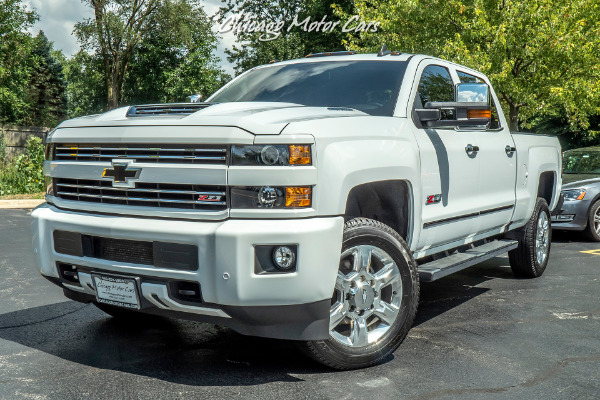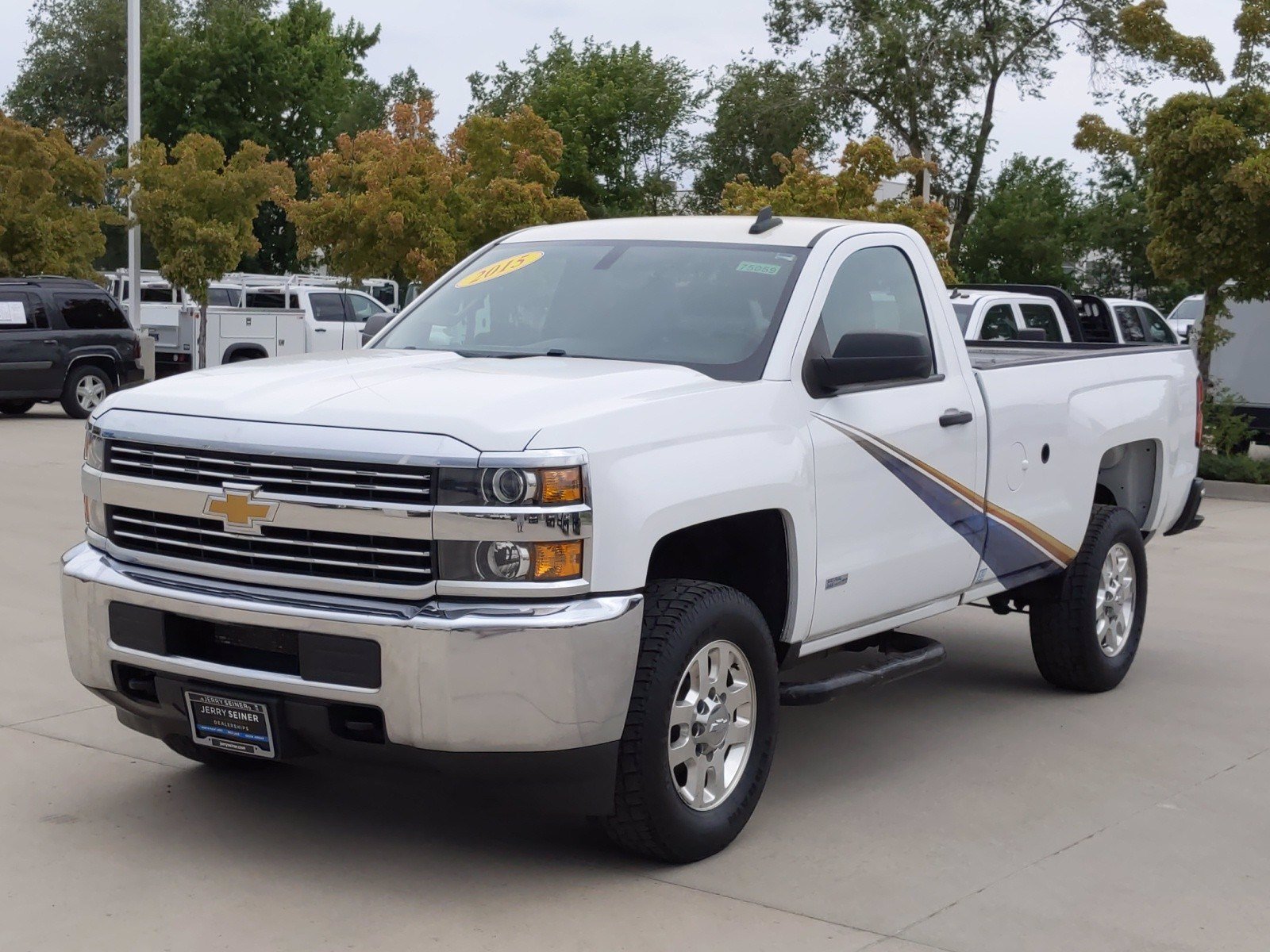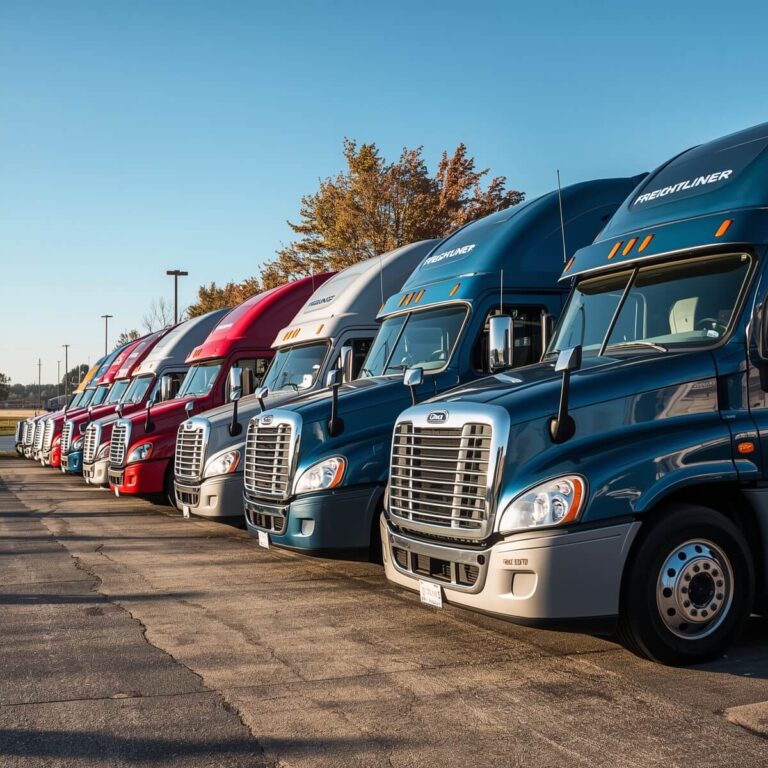The Unstoppable Workhorse: A Comprehensive Guide to Buying a Used Chevy 2500 4×4 Truck

The Unstoppable Workhorse: A Comprehensive Guide to Buying a Used Chevy 2500 4×4 Truck
For those who demand uncompromising power, rugged durability, and true off-road capability, the Chevrolet Silverado 2500 HD 4×4 stands as an icon. More than just a truck, it’s a statement of intent – a commitment to tackling the toughest jobs, hauling the heaviest loads, and navigating the most challenging terrains. While a brand-new 2500 HD can represent a significant investment, the thriving used market offers an incredible opportunity to acquire one of these legendary machines at a fraction of the cost, making true heavy-duty performance accessible to a wider audience.
This comprehensive guide delves into the world of used Chevy 2500 4×4 trucks, exploring what makes them such enduringly popular choices, what to look for across different generations, and essential tips for making a smart purchase.
The Enduring Appeal: Why a Used Chevy 2500 4×4?
The allure of a used Chevy 2500 4×4 is multifaceted:
- Unmatched Capability: These trucks are built for serious work. With higher gross vehicle weight ratings (GVWR), larger brakes, stronger frames, and more robust suspension components than their half-ton counterparts, they excel at towing massive trailers (RVs, boats, construction equipment) and hauling substantial payloads. The "HD" (Heavy Duty) designation isn’t just marketing; it’s a promise.
- Legendary Powertrains: The heart of the 2500 HD lies in its engine and transmission. Chevrolet has consistently offered powerful gasoline V8s and, famously, the Duramax diesel engine paired with the venerable Allison automatic transmission. This combination is renowned for its immense torque, reliability, and longevity, often lasting hundreds of thousands of miles with proper maintenance.
- 4×4 Prowess: The 4×4 system transforms the 2500 HD into an off-road beast, capable of navigating muddy job sites, snowy roads, rocky trails, or sandy beaches. Whether it’s for work or recreation, the ability to engage four-wheel drive adds a critical layer of versatility and confidence.
- Value and Depreciation: New trucks, especially heavy-duty models, depreciate significantly in their first few years. Buying used means letting the original owner absorb the steepest part of that depreciation curve, allowing you to get more truck for your money. A well-maintained used 2500 HD holds its value remarkably well over time, making it a sound investment.
- Proven Reliability: With millions of these trucks on the road, their strengths and weaknesses are well-documented. Many common issues have established fixes, and a vast aftermarket exists for parts and upgrades, ensuring continued support for older models.
A Walk Through the Generations: What to Expect
Understanding the different generations of the Chevy 2500 HD is crucial, as each brings its own unique characteristics, powertrain options, and potential considerations.
1. GMT800 (1999-2006, with 2007 Classic)
- Key Features: This generation marked a significant leap forward in truck design, offering a more refined ride and improved ergonomics compared to earlier models. It was the first to introduce the Duramax diesel engine and Allison transmission combination (starting in late 2000 for the 2001 model year).
- Engine Options:
- Gasoline: 6.0L Vortec V8 (LQ4/LQ9) – a robust and reliable workhorse. The massive 8.1L Vortec V8 (L18) was also available for maximum gas power.
- Diesel: 6.6L Duramax LB7 (2001-2004, known for injector issues), LLY (2004.5-2005, improved injectors, but prone to overheating when towing heavily), and the highly regarded LBZ (2006-2007 Classic, most desirable Duramax in this generation due to power and fewer known issues).
- 4×4 System: Generally a traditional part-time 4×4 system with manual or electronic transfer case selection.
- Considerations: Rust on the frame, rocker panels, and cab corners is common, especially in salt-belt regions. Interior plastics can show wear. Check for injector issues on early Duramax models and proper maintenance records.
2. GMT900 (2007.5-2014)
- Key Features: A complete redesign brought sharper styling, a significantly improved interior with better materials and more features, and enhanced ride quality. Frame strength and towing capacities were increased.
- Engine Options:
- Gasoline: Primarily the updated 6.0L Vortec V8 (L96/LY6 with Variable Valve Timing, FlexFuel capability). No 8.1L option.
- Diesel: 6.6L Duramax LMM (2007.5-2010, introduced Diesel Particulate Filter – DPF), and the LML (2011-2014, with increased power and efficiency, also featuring DPF and Diesel Exhaust Fluid – DEF). The Allison 1000 transmission continued to be standard with the Duramax.
- 4×4 System: Continued with reliable part-time 4×4, often with auto-4WD functionality on higher trims.
- Considerations: DPF/DEF systems on the diesel can be complex and expensive to maintain or repair if not cared for. Some owners "delete" these systems for performance/economy, but this is illegal for road use in many areas. Front end components (tie rods, idler/pitman arms) may wear out, especially on trucks with larger tires or heavy use.
3. K2XX (2015-2019)
- Key Features: Another substantial redesign, bringing a more modern aesthetic, an even more refined and quiet interior, and significant technological upgrades including improved infotainment and safety features. Chassis and suspension were further optimized for towing and ride comfort.
- Engine Options:
- Gasoline: 6.0L Vortec V8 (L96) remained the primary gas engine.
- Diesel: 6.6L Duramax LML (2015-2016) and the formidable L5P (2017-2019), which brought a significant jump in horsepower and torque, along with improved DEF and exhaust systems. The Allison 1000 continued its reign.
- 4×4 System: Robust and reliable, similar to previous generations, with advanced electronic controls.
- Considerations: These models are newer and generally command higher prices. While largely reliable, ensure all electronic systems (infotainment, trailer brake controller) are functioning. The LML Duramax from 2011-2016 has a known potential issue with the CP4 high-pressure fuel pump, which can fail catastrophically; some owners preemptively replace it.
4. T1XX (2020-Present)
- Key Features: A complete overhaul from the ground up, featuring a dramatically different exterior design, a massively improved interior (especially in later model years), and cutting-edge technology. Increased towing capacities, integrated trailering technologies, and a more robust chassis define this generation.
- Engine Options:
- Gasoline: 6.6L L8T gasoline V8, a more powerful and direct-injected gas engine.
- Diesel: 6.6L Duramax L5P, paired with a new 10-speed Allison automatic transmission, further boosting capability and efficiency.
- 4×4 System: Advanced 4×4 systems with various modes and electronic aids.
- Considerations: These are the newest used models available and will be the most expensive. They benefit from the latest safety and convenience features but also have the most complex electronic systems.
Powertrain Deep Dive: Duramax Diesel vs. Vortec Gasoline
The choice between a Duramax diesel and a Vortec gasoline engine is one of the most critical decisions when buying a used 2500 HD.
-
Duramax Diesel (6.6L V8):
- Pros: Enormous torque for effortless towing and hauling, better fuel economy (especially when loaded), exceptional longevity, strong resale value, integrated exhaust brake for better towing control.
- Cons: Higher initial purchase price, more expensive and complex maintenance (oil changes, fuel filters, DEF refills, DPF issues on later models), can be slower to warm up in cold weather.
- Best For: Frequent heavy towing, long-distance hauling, commercial use, those who prioritize maximum capability and efficiency.
-
Vortec Gasoline (6.0L V8, 6.6L V8, or older 8.1L V8):
- Pros: Lower initial purchase price, simpler and less expensive maintenance, quicker warm-up, generally quieter operation.
- Cons: Significantly worse fuel economy (especially when towing), less low-end torque compared to the diesel, higher RPMs required for peak power.
- Best For: Occasional heavy towing, daily driving with moderate hauling needs, those on a tighter budget, or those who prefer simpler mechanics.
The Allison 1000 transmission, exclusively paired with the Duramax for most generations, is legendary for its strength and reliability, a major selling point for diesel models.
The Ultimate Buying Guide: Smart Shopping for Your 2500 4×4
Purchasing a used heavy-duty truck requires diligence. Follow these steps to ensure you find a reliable workhorse:
-
Define Your Needs and Budget:
- What will you use it for? Daily driver, occasional towing, full-time work truck, off-roading? This dictates engine choice, cab style (regular, extended, crew), and bed length (short, standard, long).
- Budget: Not just the purchase price, but also insurance, fuel, maintenance, and potential repairs. Heavy-duty truck parts and labor are more expensive than those for half-tons.
-
Research and VIN Check:
- Generations & Known Issues: Familiarize yourself with the common issues for the specific year and engine you’re considering (e.g., injector problems on early LB7 Duramax, CP4 pump on LML, front end wear on GMT900).
- VIN Check: Run a comprehensive vehicle history report (CarFax, AutoCheck). Look for accident history, flood damage, salvage titles, consistent service records, odometer discrepancies, and previous ownership types (commercial fleets vs. private owners).
-
Thorough Inspection (Bring a Mechanic!):
- Frame & Undercarriage: Crucial for a truck. Look for excessive rust, bends, cracks, or signs of accident repair. Pay close attention to suspension mounting points.
- Body & Paint: Check for rust (rocker panels, wheel wells, cab corners), mismatched paint, large dents, or signs of body filler.
- Tires & Wheels: Even tire wear indicates good alignment. Check tire age and tread depth.
- Engine Bay: Look for fluid leaks (oil, coolant, power steering, brake fluid), cracked hoses, frayed belts, and overall cleanliness. On Duramax models, check for fuel leaks around injectors or the CP4 pump.
- Fluids: Check the color and level of engine oil, transmission fluid (should be red/pink, not dark brown or black), coolant, and brake fluid.
- Suspension & Steering: Look for worn bushings, leaky shocks, loose tie rods, idler arms, or pitman arms. Listen for clunks or squeaks.
- Brakes: Check rotor condition and pad thickness. Ensure the brake fluid reservoir is full.
- Interior: Test all electronics (windows, locks, radio, HVAC, trailer brake controller), check for ripped upholstery, excessive wear on pedals, and dashboard cracks. Ensure 4×4 engagement knob/buttons work.
-
The Test Drive: Listen, Feel, Observe:
- Cold Start: Listen for abnormal noises (knocks, rattles, excessive smoke).
- Engine Performance: Does it accelerate smoothly? Is there adequate power? Any hesitation or misfires?
- Transmission: Does it shift smoothly without harshness, slipping, or delay? Test all gears.
- Brakes: Do they feel firm and stop the truck effectively without pulling or pulsation?
- Steering: Is it tight and responsive, or loose with excessive play?
- 4×4 Engagement: Find a safe, unpaved area to test the 4×4 system. Engage 4-High and 4-Low. Listen for grinding or clunking noises. Ensure the indicator lights work.
- Drivetrain Noises: Listen for hums, whines, or clunks from the differentials or transfer case, especially when turning or under load.
- Highway Speed: Check for vibrations, wind noise, and tracking stability.
-
Professional Pre-Purchase Inspection (PPI):
- This is non-negotiable for a heavy-duty truck. Take the truck to an independent mechanic (preferably one specializing in diesel trucks if you’re looking at a Duramax) for a comprehensive inspection. Their trained eye can spot issues you might miss, and their diagnostic tools can reveal hidden problems.
-
Consider Mileage vs. Condition:
- High mileage on a heavy-duty truck isn’t necessarily a deal-breaker, especially for a Duramax/Allison combo. These powertrains are built to last. A 200,000-mile truck with meticulous service records and recent major component replacements (injectors, turbo, transmission rebuild) might be a better buy than a 100,000-mile truck with no history and signs of neglect.
Living with a Used 2500 4×4
Owning a Chevy 2500 4×4 is an experience. Be prepared for:
- Fuel Costs: Heavy-duty trucks are thirsty, especially the gas versions.
- Maintenance: Regular oil changes, fluid flushes, and filter replacements are crucial. Diesel maintenance intervals are often shorter and more expensive.
- Parts Cost: Parts for HD trucks are generally more expensive than for lighter vehicles.
- Insurance: Can be higher due to the vehicle’s weight, power, and replacement cost.
- Aftermarket Potential: A vast array of aftermarket parts exists for performance, aesthetics, and utility, allowing you to customize your truck to your exact needs.
Conclusion: Your Gateway to Heavy-Duty Capability
A used Chevy 2500 4×4 truck for sale represents an outstanding opportunity to acquire a truly capable and reliable vehicle without the premium price tag of a new model. Whether you need a relentless workhorse for your business, a powerful tow rig for your adventures, or simply a robust and dependable daily driver that can handle anything thrown its way, the Silverado 2500 HD delivers. By understanding its generations, powertrain options, and diligently following a comprehensive buying guide, you can confidently find a used 2500 4×4 that will serve you faithfully for years to come, proving that true heavy-duty capability doesn’t always have to break the bank.

